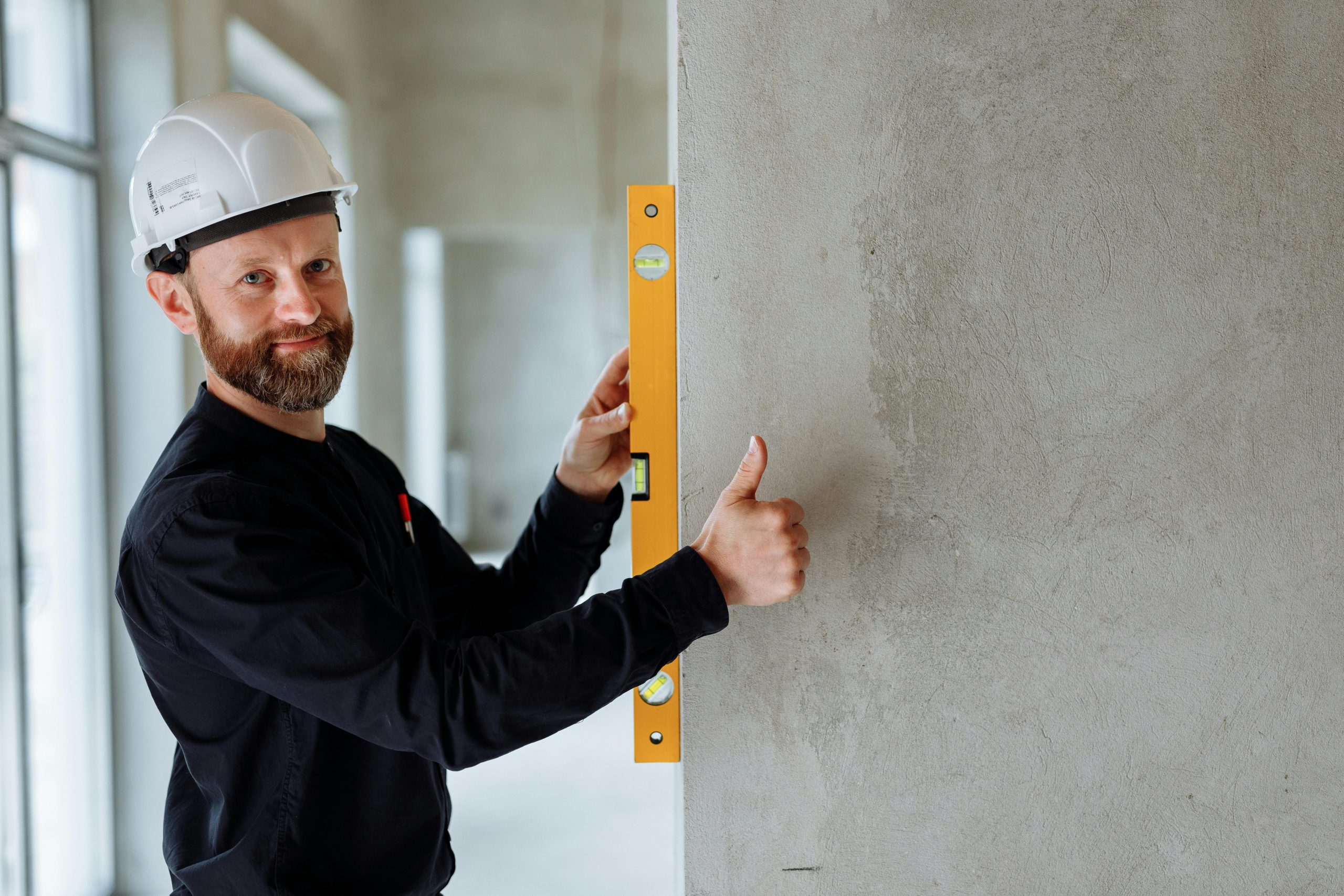Building a house is a dream for many, but the rising costs associated with construction can make that dream feel out of reach, especially during periods of inflation. In fact, according to the latest survey of the National Association of Home Builders (NAHB), construction costs made up 64.4% of the average price of a new home in 2024, a noticeable jump from 60.8% in 2022. This sharp increase in construction costs could continue to strain budgets in 2025 and beyond, making it even more challenging for homeowners to stay within their financial limits when building a new home.
With material and labor costs climbing, many budget-conscious individuals are finding it increasingly difficult to stay within financial limits. Keeping up with the rising building costs can be challenging, but it’s still possible to achieve your dream home without overspending.
In this article, we’ll explore practical tips and strategies to help you manage the cost of building a house during inflation, ensuring you can turn your vision into reality without breaking the bank.
What’s Driving the Rising Cost of Building a House?

Based on 2025 figures from Angi, the cost of building a house varies from $138,937 to $531,294, with an average of about $323,026. This wide range reflects the many variables that influence construction costs. Several factors, especially during inflation, are contributing to the rising price of building a home:
- Material Shortages: Inflation often leads to a rise in the price of raw materials like lumber, steel, and cement. Supply chain disruptions and global demand spikes further exacerbate shortages.
- Labor Costs: As inflation increases, wages in the construction industry typically rise to match the cost of living. This directly impacts the overall price of building a house.
- Higher Energy Prices: Construction requires energy, and the rising cost of energy can add to the overall price of building materials and construction equipment.
- Interest Rates: Higher inflation often leads to higher interest rates, which makes financing more expensive.
With these factors in mind, it’s crucial to stay informed and proactive when budgeting for your new home.
1. Create a Realistic Budget and Stick to It
When considering how to build your own house, creating a realistic budget is one of the most important first steps. By accounting for all costs upfront, including materials, labor, and contingencies, you can ensure that your project stays within your financial reach.
- Account for All Costs: Include everything from land acquisition, permits, and labor costs to materials, utilities, and even landscaping. It’s essential to factor in a contingency fund (10-15% of the total budget) for unexpected expenses.
- Prioritize Your Needs: Identify must-have features and areas where you’re willing to compromise. A spacious kitchen or luxury bathroom might be non-negotiable, but you could opt for a simpler design in other areas.
2. Choose a Smaller, More Efficient Home Design
When inflation hits, the cost of building materials can skyrocket. One of the best ways to manage these rising expenses is by designing a smaller and more efficient home.
- Smaller Floor Plans Save Big: A smaller home requires fewer materials and less labor, which directly reduces costs. Consider focusing on compact yet functional spaces, such as open floor plans that maximize the use of every square foot.
- Simple Designs Are More Cost-Effective: Stick to straightforward layouts with fewer intricate designs and custom features. Avoid overly complex architectural details that will drive up material and labor costs.
- Energy Efficiency Pays Off: Building an energy-efficient home with smart insulation, high-efficiency windows, and renewable energy options may cost more upfront but save you money in the long run by reducing utility bills.
3. Source Materials Wisely to Cut Costs
Materials can account for a significant portion of your total building costs. Finding cost-effective materials without compromising quality is one of the most effective ways to manage expenses during inflation.
- Buy in Bulk: If possible, buy materials in bulk or directly from wholesalers. You may get a better price per unit, which can help reduce overall costs.
- Consider Alternative Materials: Explore cost-effective materials that mimic the look and feel of more expensive ones. For example, engineered wood may offer a similar aesthetic to hardwood but at a fraction of the price.
- Reclaimed and Recycled Materials: Opt for reclaimed or recycled materials, such as salvaged wood or recycled bricks. These can offer substantial savings and contribute to a more sustainable build.
4. Negotiate with Contractors for Better Rates

Labor costs can be one of the biggest expenses in building a home. While you might not have direct control over these costs, there are ways to negotiate with contractors to get the best value for your money.
- Get Multiple Quotes: Don’t settle for the first bid you receive. Reach out to at least three contractors to get a variety of quotes. This will give you a clearer picture of fair pricing.
- Negotiate Payment Terms: Some contractors may offer discounts if you pay upfront or in larger installments. Others might be more flexible on timelines and costs if you’re willing to be flexible with your project’s schedule.
- Consider a General Contractor: If you’re managing your build yourself, a general contractor can help streamline the process and potentially negotiate better rates with subcontractors.
5. Choose the Right Time to Build
Timing plays a crucial role in managing building costs, especially during inflationary periods. Building during certain times of the year can save you money.
- Off-Season Construction: Contractors and material suppliers are typically less busy during the winter months. This can result in lower labor rates and discounts on materials.
- Avoid Supply Chain Disruptions: Pay attention to global events that may cause delays or price increases in certain materials. Try to avoid starting your project during a time when shortages are expected to impact the industry.
6. Use Technology to Track and Manage Your Budget
Managing a construction project can get complicated, and keeping track of every penny spent is essential to avoid overspending.
- Construction Management Apps: Utilize construction management software or apps to track expenses, manage tasks, and communicate with contractors. Tools like Buildertrend or CoConstruct can give you real-time updates on your project’s financials.
- Spreadsheets and Budget Templates: Simple budgeting tools, like Excel or Google Sheets, can be a low-tech but effective way to stay organized. Many free templates are available online for home building projects, helping you keep all your costs in one place.
7. Opt for Pre-Designed Plans or Modular Homes
Custom-built homes offer flexibility and personalization, but they can also add significant costs. If your budget is tight, consider these alternatives:
- Pre-Designed House Plans: Opting for a pre-designed house plan can save you money on architectural fees and custom designs. Many homebuilders offer a range of plans that are cost-effective yet highly functional.
- Modular Homes: Modular homes are prefabricated sections of a home that are assembled on-site. These homes are often less expensive to build and can be customized to fit your needs while saving on labor and construction time.
8. Monitor Inflation and Stay Flexible
Finally, it’s important to keep an eye on inflation trends and adjust your plans accordingly. Inflation can be unpredictable, and staying flexible is key to managing the rising costs of construction.
- Track Market Trends: Regularly check for updates on material prices, interest rates, and labor costs. Websites like the National Association of Home Builders (NAHB) can help keep you informed about current industry trends.
- Stay Open to Adjustments: Be prepared to make adjustments to your design or material choices if inflation makes certain options unaffordable. It’s better to scale back on some features than to go over budget.
Achieving Your Dream Home Without Breaking the Bank
Managing the cost of building a house during inflation requires a carefully thought-out plan and willingness to explore cost-saving options. By focusing on efficient designs, sourcing materials wisely, negotiating with contractors, and staying informed, you can build your dream home without overspending. With the right approach, you can stay on track financially while still achieving a high-quality, beautiful home that fits your budget.

